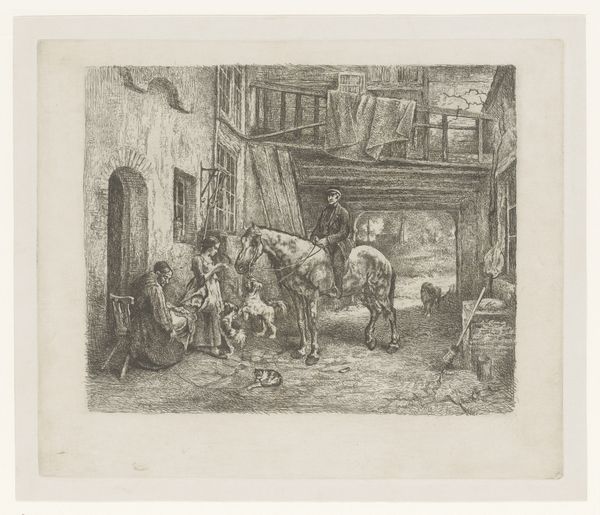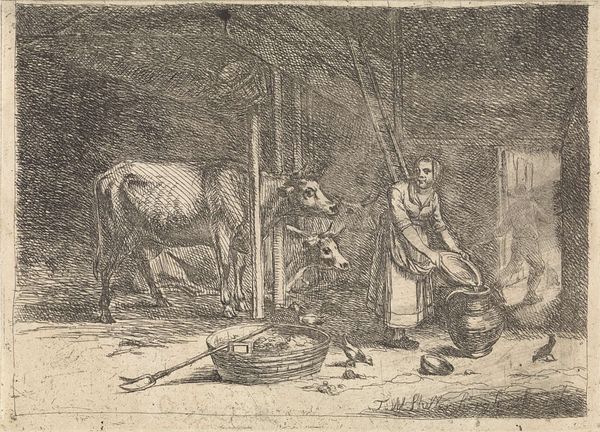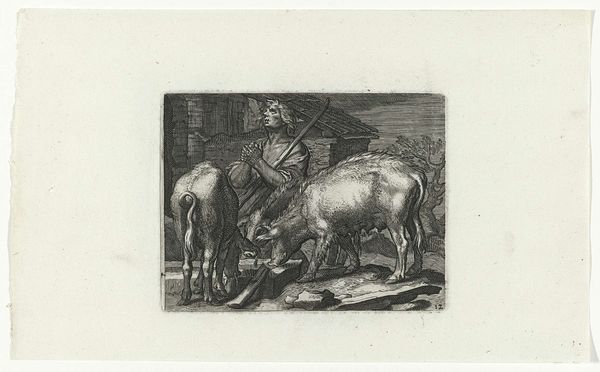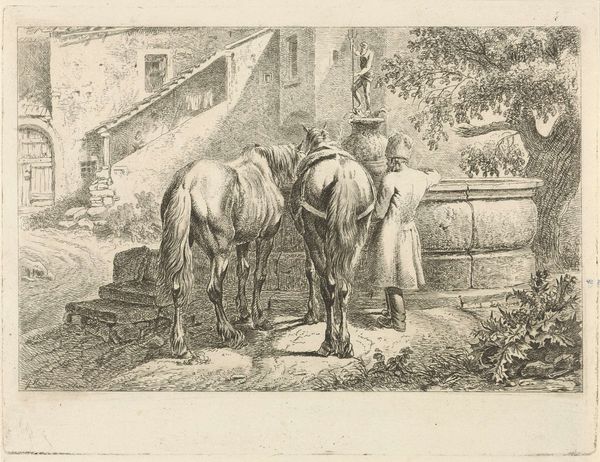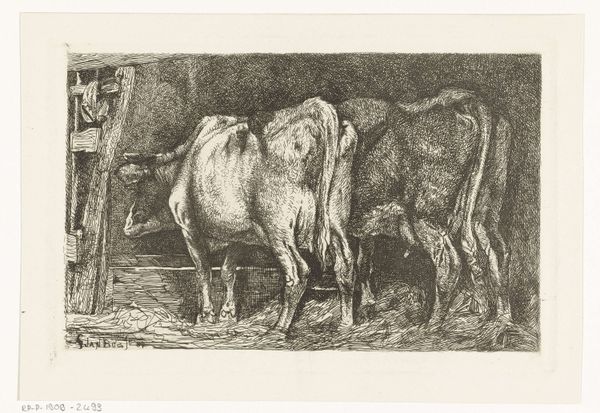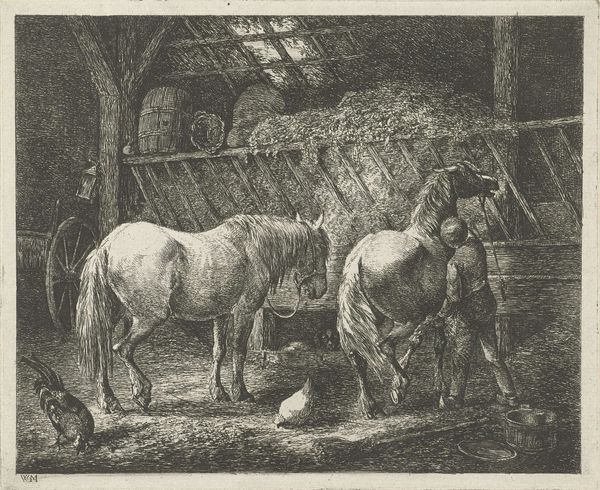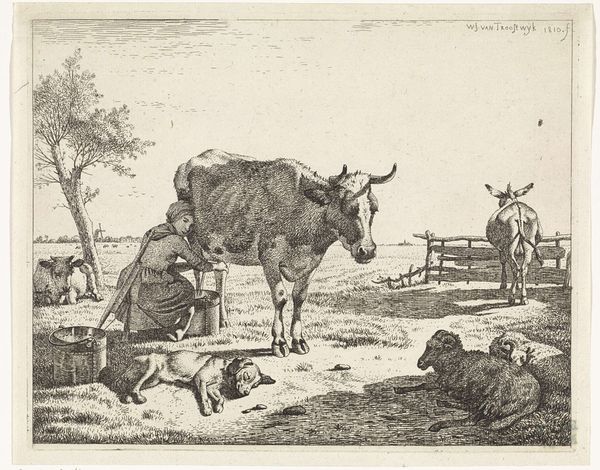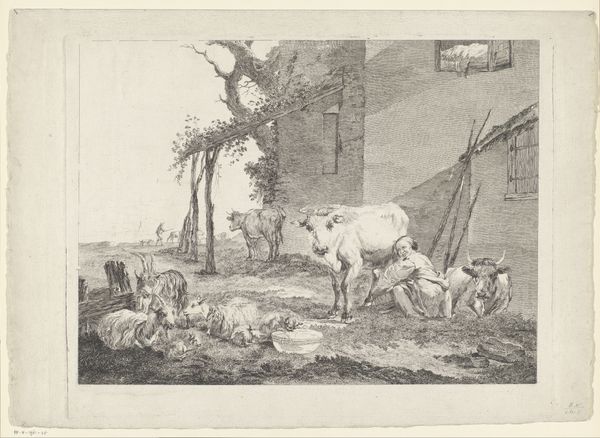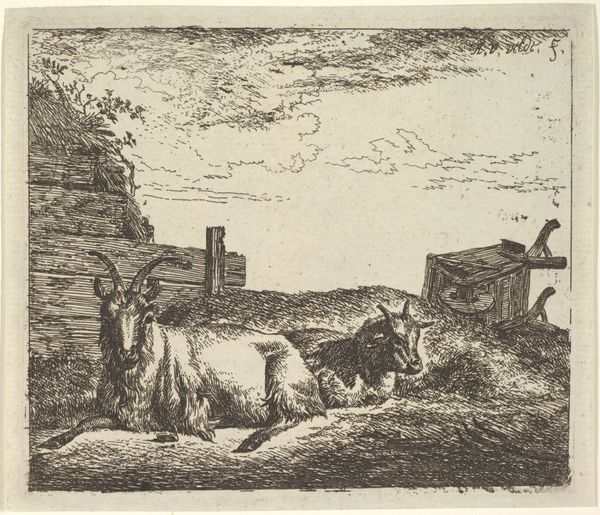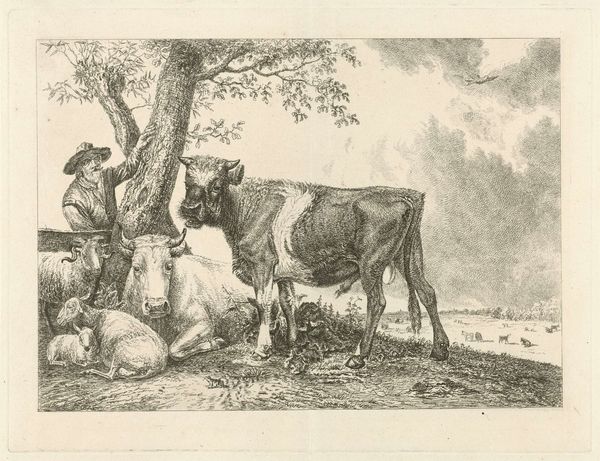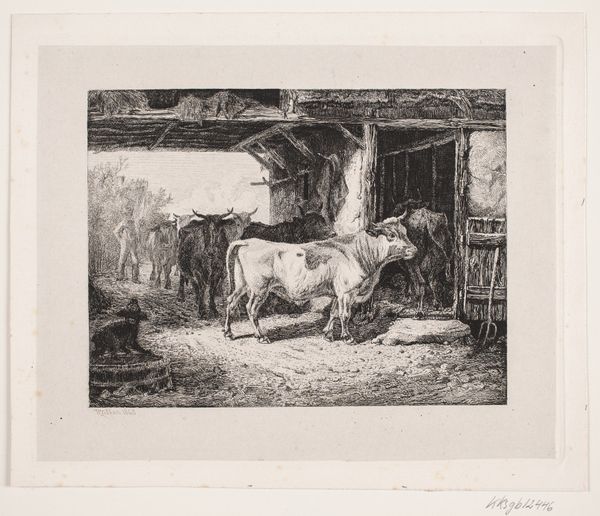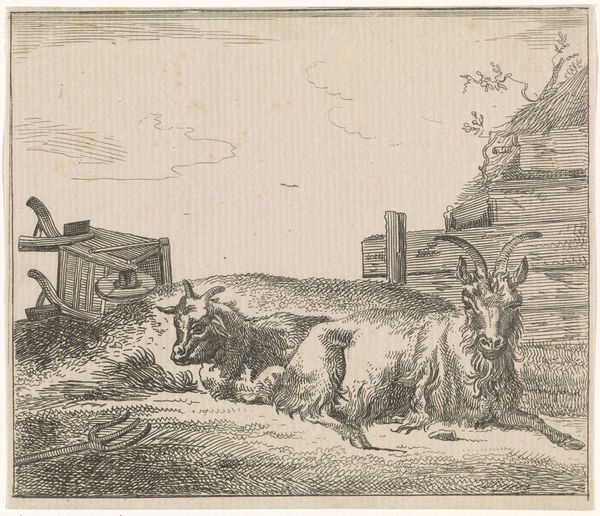
print, engraving
# print
#
landscape
#
figuration
#
romanticism
#
genre-painting
#
engraving
#
realism
Dimensions: height 169 mm, width 227 mm
Copyright: Rijks Museum: Open Domain
Editor: So, this is Johann Adam Klein's "Stalknecht borstelt een koe die haar kalf wast", from 1818, a print – an engraving – currently housed at the Rijksmuseum. It feels very...domestic. What strikes me most is the everyday quality. What do you see in it? Curator: Well, consider the materiality of engraving itself. The artist painstakingly carves lines into a metal plate. Think of the labor involved in producing multiples of this image. It brings art, or at least a representation of rural life, to a wider audience, connecting with growing market demands. It depicts not nobility but the material labor that structures society. How does it challenge traditional ideas about what constitutes 'high art'? Editor: It’s definitely not a grand history painting! The scene focuses on a farmhand and livestock. Do you think Klein intended a specific message about labor or social class? Curator: It's interesting that you pinpoint labor. Precisely! Consider this print’s existence as an object of commerce. These engravings entered circulation, embodying a material connection between artist, producer, and consumer. How might that dynamic influence our interpretation of its content? This is 1818, we're post-revolution and industrial shifts were altering views on labor. Editor: So it's not just about the literal scene, but also the *making* of the scene and the artist’s engagement with a market eager for such imagery? Curator: Exactly! Klein created something reproducible. This invites scrutiny of not only *what* he depicts but the *how* of distribution. And we shouldn't neglect its aesthetic choices like his use of line to model forms. Are those decisions influenced by the print medium? How might a painter depict this scene differently, focusing on materiality of the paint? Editor: I hadn't considered how the engraving process itself contributes meaning! Curator: Right. It asks us to think beyond a simple narrative about farm life and question the very means of production that brought it to us. It also made me think about how technological innovation can expand who gets to see what, not just who makes art.
Comments
No comments
Be the first to comment and join the conversation on the ultimate creative platform.
